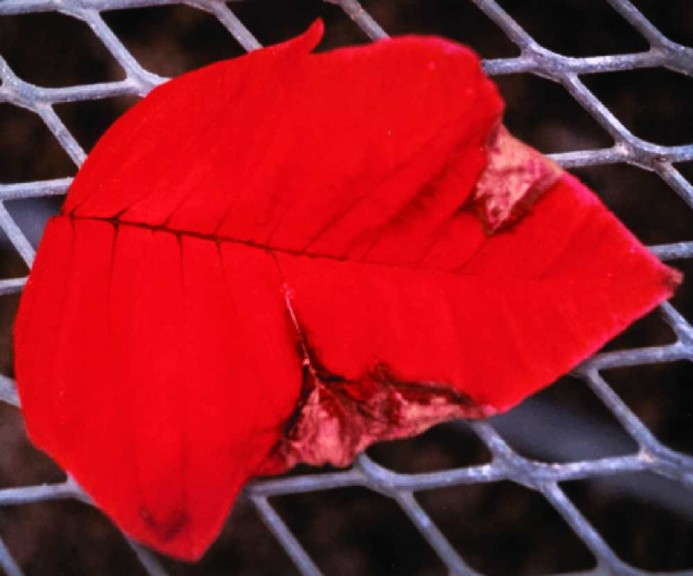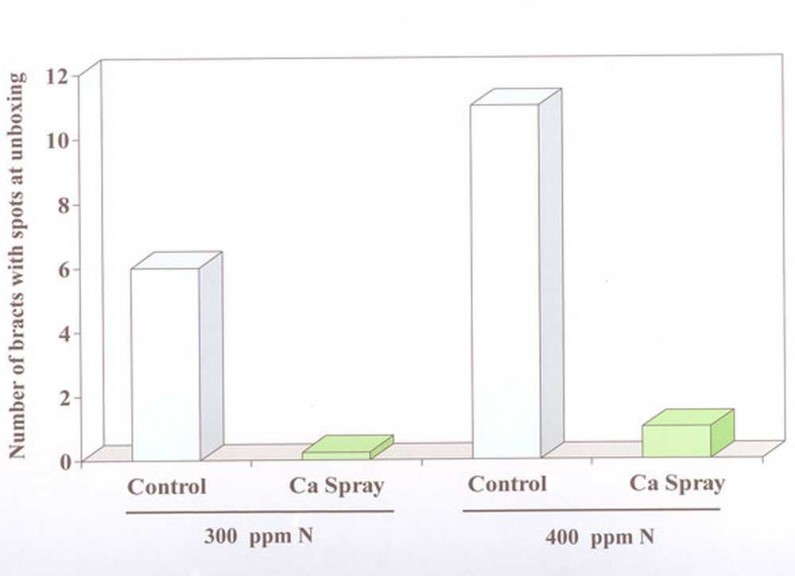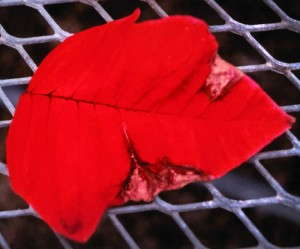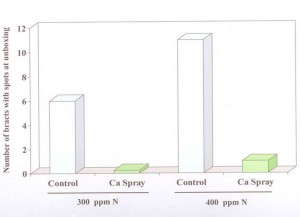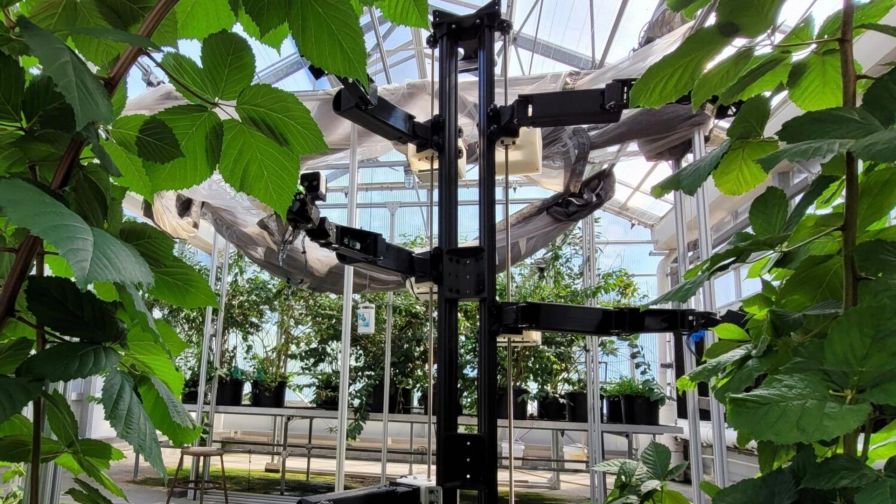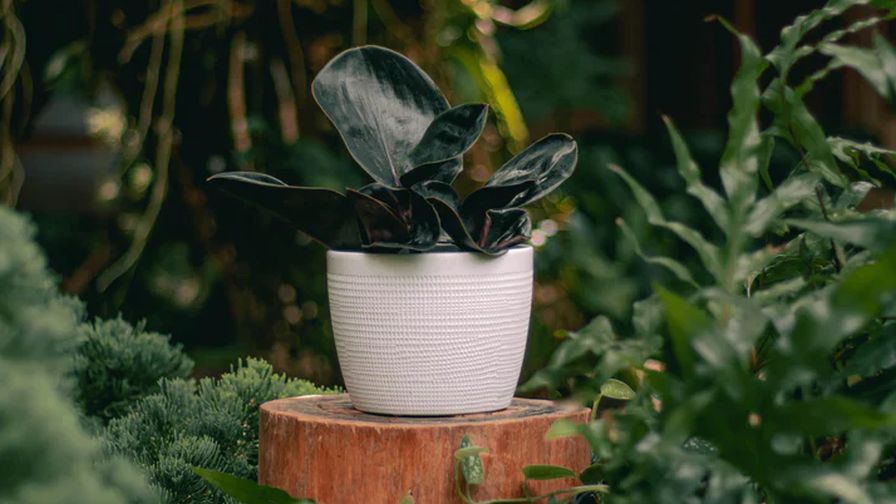Plan Now To Prevent Bract Edge Burn On Poinsettias
Growing poinsettias profitably requires that growers prevent losses during production, as well as during shipping and handling. Production practices can affect susceptibility of plants to bract edge burn as plants are packaged, shipped and displayed.
[blackoutgallery id=”61755″]
Poinsettias are sensitive to a disorder referred to as bract edge burn, a problem that causes the edges of the bracts to become brown and necrotic. In severe cases, all bracts can be affected, leading to decay of the entire top portion of the plant from Botrytis infection. Prevention of bract edge burn requires proper nutrition, watering, temperature and humidity management during the final four to five weeks of the crop. Planning for the prevention of bract edge burn early in the crop cycle will avoid this potentially devastating problem.
Bract Edge Burn — The Cause
The initial damage associated with bract edge burn is development of brown spots around the edge of the bract or brown decay at the tip of the bract (Slideshow Figure 1). Bract edge burn can be best described as a nutritional disorder followed by the invasion of Botrytis. While the brown necrotic areas are cosmetically distracting, the secondary Botrytis infection is what really causes the damage to the bracts (Slideshow Figure 2). This fungus will invade the necrotic tissue and as it becomes more aggressive, it will invade healthy tissue, causing the plant to become unmarketable.
Rapidly growing bracts require nutrients to expand and grow. Under conditions of rapid bract expansion, some nutrients, such as calcium, may become deficient, thus causing the marginal spotting of the bracts. A similar calcium deficiency causes blossom end rot of tomatoes and black-heart disease of celery. Analysis of calcium in the bracts does not generally show calcium deficiency, since the lack of calcium is localized at the edge of the bract. Supplementing additional calcium to the fertilizer program will not solve the deficiency problem. Poinsettia varieties differ in susceptibility to bract edge burn.
Production Conditions Can Promote Bract Edge Burn
Production conditions that promote rapid expansion of the bracts leads to greater problems with bract edge burn. Rapid expansion results in limited calcium availability along the bract edge. Once bracts begin to show color, the bracts are slow to enlarge, so it is tempting to water more frequently, fertilize as when the plant is actively growing following the pinch, and/or to increase day and night temperatures. All of these production practices will lead to larger bracts and increased problems with bract edge burn.
Tips To Avoid Bract Edge Burn
The following adjustments in production practices are encouraged to reduce or totally prevent bract edge burn:
• Reduce or eliminate fertilizer when bracts begin to color. Reducing fertilizer by 50 percent for the first two weeks following bract coloring, then eliminating fertilizer, will help to reduce bract edge burn. Assure that ammonium fertilizer is 30 percent or less of the total nitrogen fertilizer program.
• Spray calcium on the bracts and leaves weekly from the first sign of bract color to the time plants are shipping. Recommended calcium levels are 400 ppm calcium from calcium chloride. Use of a wetting agent is suggested (Slideshow Figure 3).
• Reduce watering once bracts begin to show color.
• Reduce humidity in the production area, and maintain good air movement with horizontal air flow fans. Watering plants no later than 1 or 2 p.m. daily will help to reduce moisture and humidity.
• Avoid the use of negative DIF (high night and low day temperatures) once bracts show color.
• Choose varieties that are less sensitive to bract edge burn
Packaging And Shipping
Care must be taken during packing and shipping to avoid conditions that are conductive to the development of Botrytis. Bract edge burn problems are worse if plants are shipped in boxes since the humidity in the boxes often exceeds 90 percent, which is ideal for germination of Botrytis spores. Shipping on racks allows for some air movement and reduced humidity during shipping.
Regardless of how you ship plants, watering plants the day before shipping and allowing free water to drain from the pots is extremely beneficial. This will eliminate excess water in the shipping environment and help to reduce humidity. Also, use of perforated plastic sleeves or fiber sleeves allows water to evaporate more freely.
Be Successful — Avoid Bract Edge Burn
Bract edge burn can be avoided by choosing less susceptible varieties and by providing proper production and transport conditions. Plan now to reduce fertilizer and water and allow your poinsettias to develop slowly during the final four weeks. Follow the recommendations to avoid any problems with bract edge burn.






